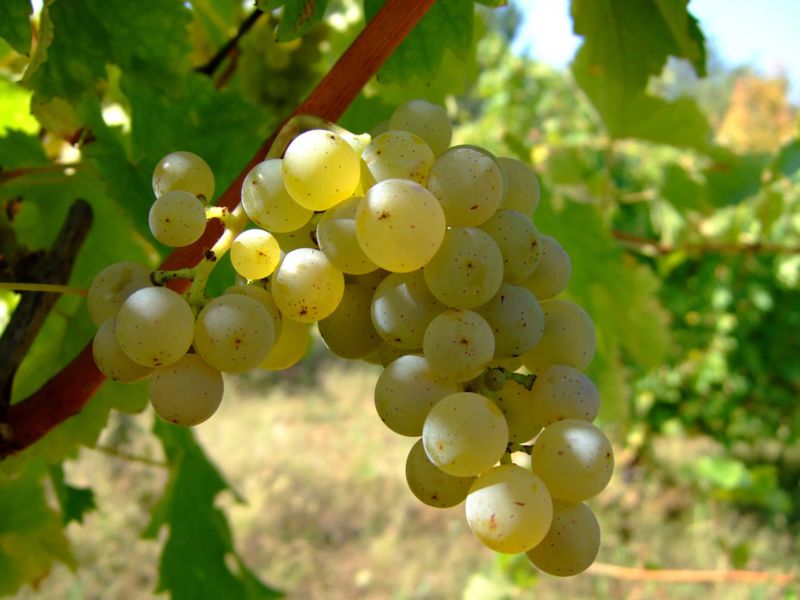Understanding grape varieties: a comprehensive journey from vine to wine
Exploring the seven grape varieties that shape the wine industry worldwide

When you take the first sip of your wine, you are experiencing the end of a long, complex journey that begins with the variety of grape. Understanding the type of grape used in the wine's production is pivotal, as it offers valuable information about the flavor profile and character of the wine you're about to indulge in. Moreover, the grape's provenance can provide clues about the wine, since the same grape variety can result in different characteristics depending on the soil and climatic conditions in which it's grown.
The importance of soil and winemaking techniques can't be overstated. Originally, the vine was a wild plant that climbed trees, but today, vintners choose specific strains based on the soil and growing conditions. Although there are multitudes of grape types (Vitis vinifera) that can be used to make wine, some have been selected by vintners due to their unique characteristics, and the best of these produce the world's most renowned wines.
The most famous strains originally hail from Europe and are referred to as classic strains or varieties (classic wines). Particularly in France, the viticultural region regulates the employment of varieties, a regulation that also exists in Italy and Spain. In some instances, French varieties like Cabernet Sauvignon in Tuscany and Chardonnay in Catalonia have been introduced to complement local strains. American vintners have planted large areas with these classic European strains; however, the resulting wine can differ significantly in taste due to the effects of sun exposure, climate, soil, and other elements specific to a vineyard, along with the winemaking technique used.
While classic varieties have garnered global recognition, numerous non-classic wines are also of exceptional quality. Currently, most of the world's production comes from non-classic strains cultivated for their tradition, yield, or adaptability to local climates and soils.
The 'Vitis' or vine is a plant with around 60 accepted species, out of nearly 800 described, and is part of the Vitaceae family. It predominantly grows in the northern hemisphere. Its economic importance stems from the fruit it produces - the grape, used both for direct consumption and for fermentation to produce wine, among other culinary uses. The study and cultivation of grapes is known as viticulture.
Here, we explore the seven most commonly used grapevines in wine production worldwide:
VITIS VINIFERA
Vitis vinifera, a semi-woody and climbing plant, can reach over 30m when allowed to grow freely. However, it is pruned annually by humans and reduced to a small bush of 1m. Its precious fruit, the grape, is the raw material for wine production. Most of the grape grown globally comes from this species, native to Mediterranean Europe and Central Asia, and to a lesser extent, America and Asia. While it's the leading variety used in juice and wine production, it is also marketed as fresh table grapes, dried raisins, and in the preparation of foods like jams, jellies, and gelatins.
VITIS LABRUSCA
Known as the wild grape or Vitis labrusca, this climbing shrub of the Vitaceae family originated in North America, stretching from the East Coast of the United States to the Great Plains. In Argentina, it's known as the 'chinche' grape or 'monterrico.' It is used both for table grapes and in winemaking.
VITIS RIPARIA
Commonly known as River Bank Grape or Frost Grape, Vitis riparia Michx is a climbing and trailing vine native to North America. It is widely grown, from Quebec to Texas and from Montana to New England. Vitis riparia grapes are used both for food (jams and jellies) and for winemaking. It's extensively used in programs to transfer genes of cold and disease resistance to grape-producing cultivars for wine-making, with the France's-Americans hybrid grapes being a notable example.
VITIS ROTUNDIFOLIA
Vitis rotundifolia, or Muscadinia, is a climbing shrub of the Vitaceae family, originating from North America. The berries range from dark violet to black when ripe, though many wild varieties stay green through maturity. The fruit is used fresh, and in the production of wine, juice, jams, and jelly.
VITIS AESTIVALIS
Native to eastern North America, Vitis aestivalis is a vigorous climber, growing over 10 meters in height. It's believed to be the oldest American grape in commercial production. It's used in food, but also in the production of wines.
VITIS VULPINA
Similar to Vitis riparia, Vitis vulpina is a species of the Vitaceae family, commonly known as frost grape, winter grape, and fox grape. This climber from Central and Eastern North America can reach heights of up to 25 meters. Despite its names, it has poor tolerance to low temperatures.
VITIS AMURENSIS
Vitis amurensis is a species of vine originating from Asia. Its name comes from the Amur River valley between Russia and China. It is extremely frost-resistant (surviving winter temperatures of up to -35°C), but it is not drought-tolerant.
VINIFERA HYBRIDS
Currently, there are over 30 hybrids of Vitis vinifera used in winemaking. Understanding the diversity of these grape varieties provides consumers with a rich and varied choice, allowing them to explore a world of flavors and styles in their wine experiences.
Founded in 2007, Vinetur® is a registered trademark of VGSC S.L. with a long history in the wine industry.
VGSC, S.L. with VAT number B70255591 is a spanish company legally registered in the Commercial Register of the city of Santiago de Compostela, with registration number: Bulletin 181, Reference 356049 in Volume 13, Page 107, Section 6, Sheet 45028, Entry 2.
Email: [email protected]
Headquarters and offices located in Vilagarcia de Arousa, Spain.